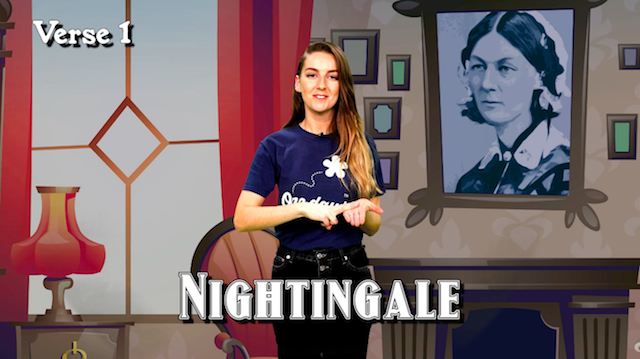March 24, 2021
One Day in Desks!
Have a sneak peek at our team's work-from-home setups!
World Poetry Day takes place on Sunday 21st March this year. Okay, we might not be in our classrooms on the exact day. BUT, what’s stopping us from celebrating the creativity, joy and possibilities of poetry any time of year?!

Led by UNESCO, World Poetry Day is a time to reflect on this wonderful oral tradition that’s hundreds (and hundreds and hundreds!) of years old. Poetic expression is available to everyone, no matter your age, abilities or personal circumstance. Writing poetry isn’t just about who we are, but how we feel, and how we can use our creativity to share that with the world.
This year, we wanted to encourage you to try something a bit different for World Poetry Day. Rather than focusing only on written poetry, why not challenge yourself to create a Makaton poem?
Makaton is a simple, visual language programme that helps people to communicate. It’s a little bit like sign language, expect the signs and symbols are used in conjunction with speech. Why do we use it? Because it helps support the development of spoken language and allows all kinds of people to communicate (and that’s very important).
A Makaton poem is simply a poem created using this unique type of language! To get you started here’s a handy CBeebies video with some simple Makaton signs.
Can you make a poem using any of the words included in that video? Perhaps you said goodbye to Daddy and left home to play in the garden? Or in the middle of your book, you asked Mummy for your favourite food before going to bed? A poem can be as silly, as serious, as short or as long as you like. Get creative! To find more Makaton signs, sign into The Makaton Library here.
Songs and rhymes are a fantastic way to introduce Makaton into the classroom. There are many popular nursery rhymes children will already be familiar with. Start with a classic, like Baa Baa Black Sheep or Old McDonald Had A Farm, and substitute the animals and colours for signs instead!
Not only is this a fun and easy way to learn, but it also shows that poetry is something we’re often already familiar with. Creating your own poem can sound a little intimidating at first, but it needn’t be! Nursery rhymes are an excellent source of inspiration.

You can also use Makaton and poetry together as a dynamic way to make learning more memorable. In our online teaching resource, Uno, we have a KS1 & KS2 video all about Florence Nightingale. In it, we share some key facts about this remarkable woman and learn a selection of Makaton signs. Then, we finish by performing a poem about the ‘Lady with the Lamp’ – all in Makaton! As well being fun and accessible, the visual aspect can really help to focus attention on a specific topic. Give it a go and let us know what you think.
In addition to the above Florence Nightingale and Makaton teaching resource on Uno, we also have a super quick VE Day Makaton Song available on our YouTube channel!